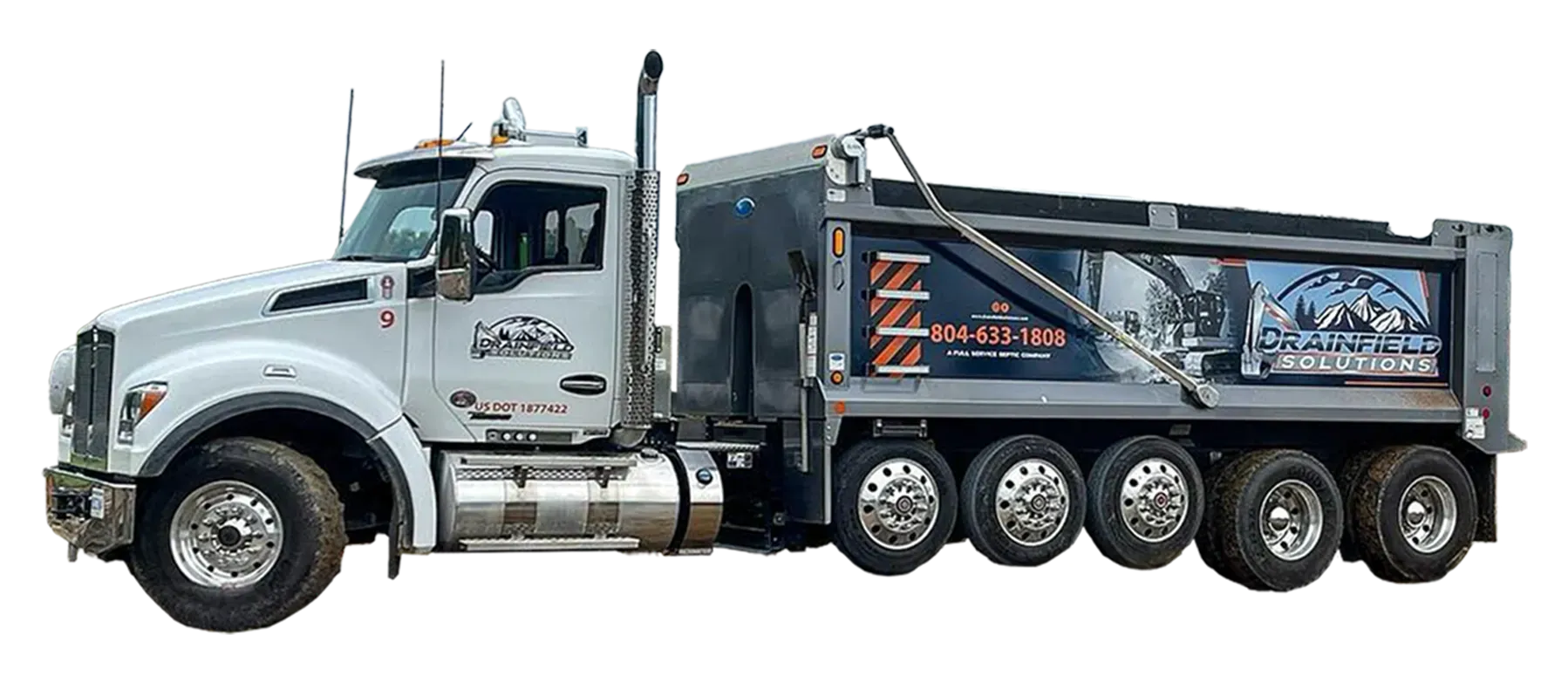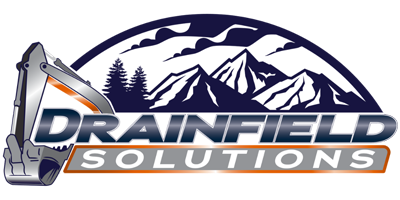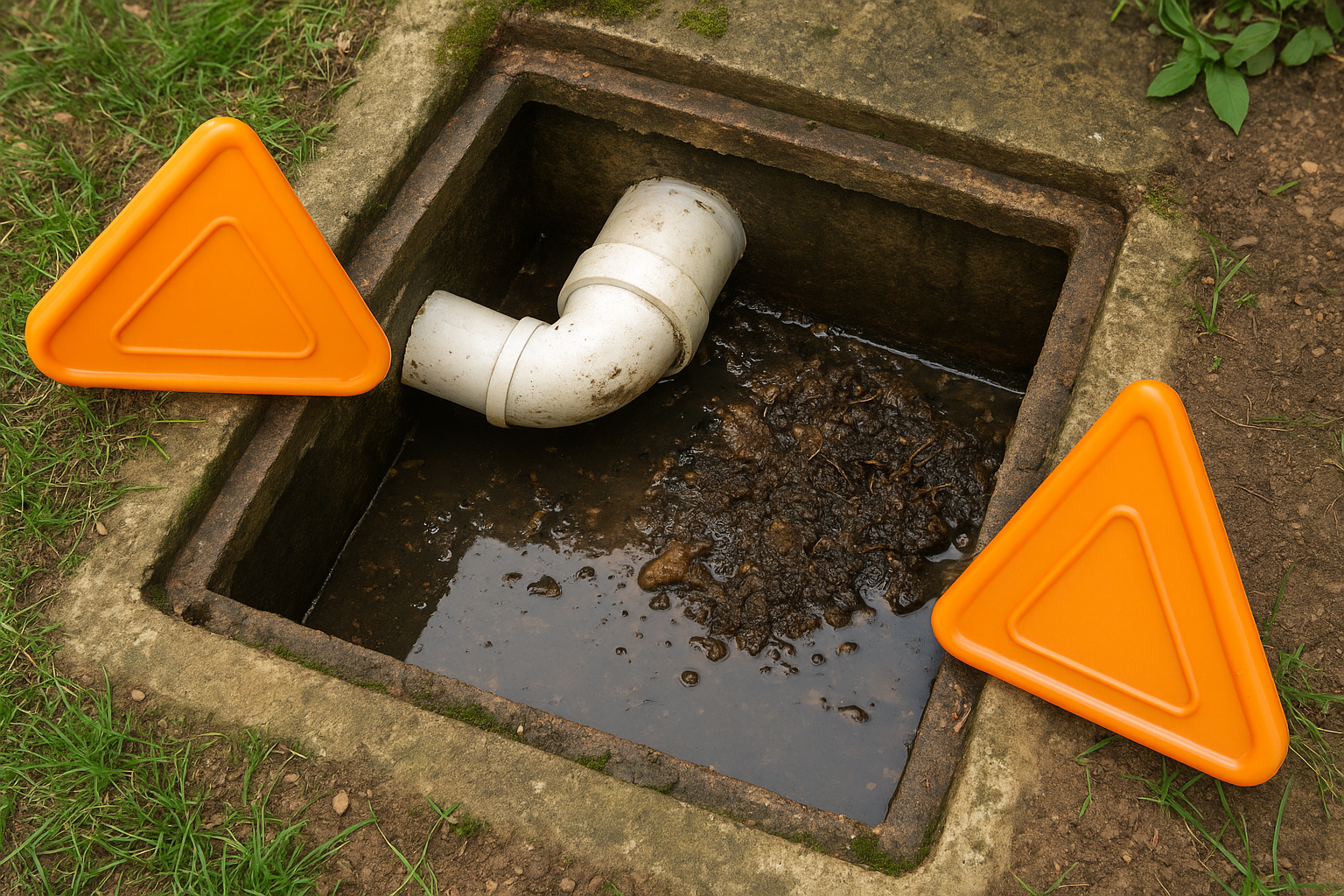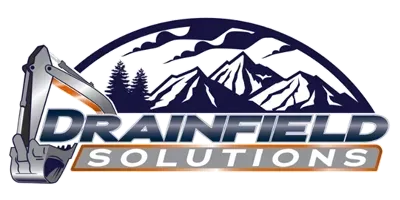
Drainfield Repair vs. Drainfield Replacement: How to Decide
December 21, 2024
Septic drainfield problems can quickly escalate into a homeowner's nightmare if left unresolved. But when problems arise, how do you decide whether on drainfield repair or drainfield replacement?
Both options come with different implications for your budget, home, and the environment. Knowing which route to take can save you from unnecessary expenses and frustration.
This blog will guide you through the core differences between septic drainfield repair and drainfield replacement, and provide guidance on how to make the best decision for your specific situation.
What Is a Septic Drainfield and Why Does It Matter?
A septic drainfield—also known as a leach field—is an essential component of your septic system. After wastewater leaves the septic tank, it passes to the drainfield, where it is filtered naturally by the surrounding soil. This process removes harmful bacteria and pathogens, ensuring that the water re-enters the local ecosystem safely.
However, drainfields are vulnerable to a range of issues, including clogs, root intrusion, and over-saturation. If left unchecked, these problems can lead to sewage backup, foul odors, and contaminated groundwater. This is why maintaining and repairing your drainfield is so important for both your home and the environment.
Signs Your Septic Drainfield Needs Attention
Before deciding between repair or replacement, it’s essential to recognize the signs of a failing drain field. Some common symptoms include:
- Slow Drains: If your sinks, showers, or toilets are taking longer than usual to drain, it could indicate a clog in your system.
- Sewage Backup: One of the most unpleasant signs of a faulty drain field is wastewater backing up into your home.
- Standing Water: Pools of water in your yard, particularly near the drain field, suggest poor drainage or oversaturation.
- Foul Odors: A persistent sewage smell near your drain field is a major red flag.
- Lush Patches of Grass: While this might seem like a positive development, unusually green areas over your drain field often signal leaks or oversaturation.
If you're noticing these issues, the next step is to assess whether repair is sufficient or if replacing a septic system drainfield is necessary.
When to Opt for Septic Drainfield Repair
Drainfield repair is often the more affordable and less invasive option. It involves addressing specific problems without removing or replacing the entire system. Here’s when repair may be the best choice:
1. Minor Clogs or Blockages
Over time, your drainfield’s pipes can become clogged with organic matter, oils, and grease. If caught early, a professional can clean the system and restore proper flow. This is often a simple and cost-effective fix.
2. Soil Compaction Issues
Compacted soil can prevent wastewater from filtering correctly. Aerating the soil around the drainfield using specialized equipment can solve this problem without the need for replacement.
3. Damaged Pipes
If only a section of your septic pipes is damaged due to tree roots or wear and tear, localized repairs can resolve the issue. You can search for professionals offering “septic drainfield repair near me” to find experts equipped to handle this type of job quickly.
4. Early Warning Signs
If you catch issues like slow drainage or minor pooling early, repairs can help extend the lifespan of your drainfield, often by several years.
When to Replace Your Drainfield
Replacement, while more expensive and labor-intensive, is necessary when the damage to your system is extensive. Consider replacing your drainfield in the following situations:
1. Total System Failure
If your drainfield is completely saturated, wastewater has nowhere to go. This can lead to severe backups and environmental hazards, often leaving no choice but to replace it.
2. Age of the Drainfield
Most drainfields have a lifespan of 20-25 years. If your system is reaching this age and showing signs of failure, replacement may be the more practical long-term solution.
3. Severe Root Intrusion
Tree roots can invade and damage your septic pipes, rendering the system beyond repair. Removing the affected pipes isn’t always sufficient, so a full replacement may be needed.
4. Poor Initial Installation
If your original septic system was improperly designed or installed, replacing your drainfield with a correctly planned system can prevent ongoing issues and save on long-term repair costs.
If you're considering replacing a septic system drainfield, consult with licensed professionals in your area. They can provide detailed assessments and estimates to guide your decision.
Comparing Costs
Cost is a major factor in deciding between repair and replacement. Here’s a general breakdown of expenses to help you compare the two options:
- Drainfield Repair Costs:
Simple drainfield repairs typically cost between $500 and $4,000, depending on the severity of the issue. Minor repairs, such as unclogging pipes, tend to fall on the lower end of the spectrum.
- Drainfield Replacement Costs:
Replacing a septic system drainfield is more expensive, usually ranging from $5,000 to $20,000 or more. This includes excavation, installation of new pipes, and any necessary soil treatment.
While repair might seem like the obvious choice for saving money, remember that repeated small repairs can add up over time. If your system is aging or severely damaged, replacing it might save you money in the long run.
Environmental and Health Considerations
A failing drainfield can lead to significant environmental issues, such as groundwater contamination and pollution of nearby water sources. These problems can have far-reaching effects, potentially harming local wildlife, disrupting ecosystems, and posing serious health risks to your family and community. Contaminated water may lead to illnesses or unsafe conditions for those relying on the affected water sources.
If you’re facing a failing septic drainfield, it’s important to act quickly. Whether you choose to repair or replace it, working with licensed professionals is essential to ensure the job is done thoroughly, safely, and in compliance with local regulations.
Proper septic tank installation and septic tank maintenance not only protect your property but also help preserve the health of the surrounding environment. By promptly addressing the issue, you contribute to safeguarding the ecosystem and maintaining the well-being of your community.
Taking Action For Drainfield Solutions in Central Virginia!
Don't wait for problems to arise—take proactive steps to ensure your septic drainfield system remains in top shape. Contact Drainfield Solutions for reliable septic tank solutions! Drainfield Solutions has been offering septic tank pumping, septic system design and installation, and septic tank drianfield repairs in Caroline County, Spotsylvania County, Hanover County, Stafford County, King George County, and Louisa County for two decades. Schedule your septic tank inspection appointment today!
Share Post
Latest Posts
Ready to Take the Next Step?
Whether you're in need of a system inspection or regular maintenance, Drainfield Solutions is here to help. Get in touch today for reliable service you can trust.






